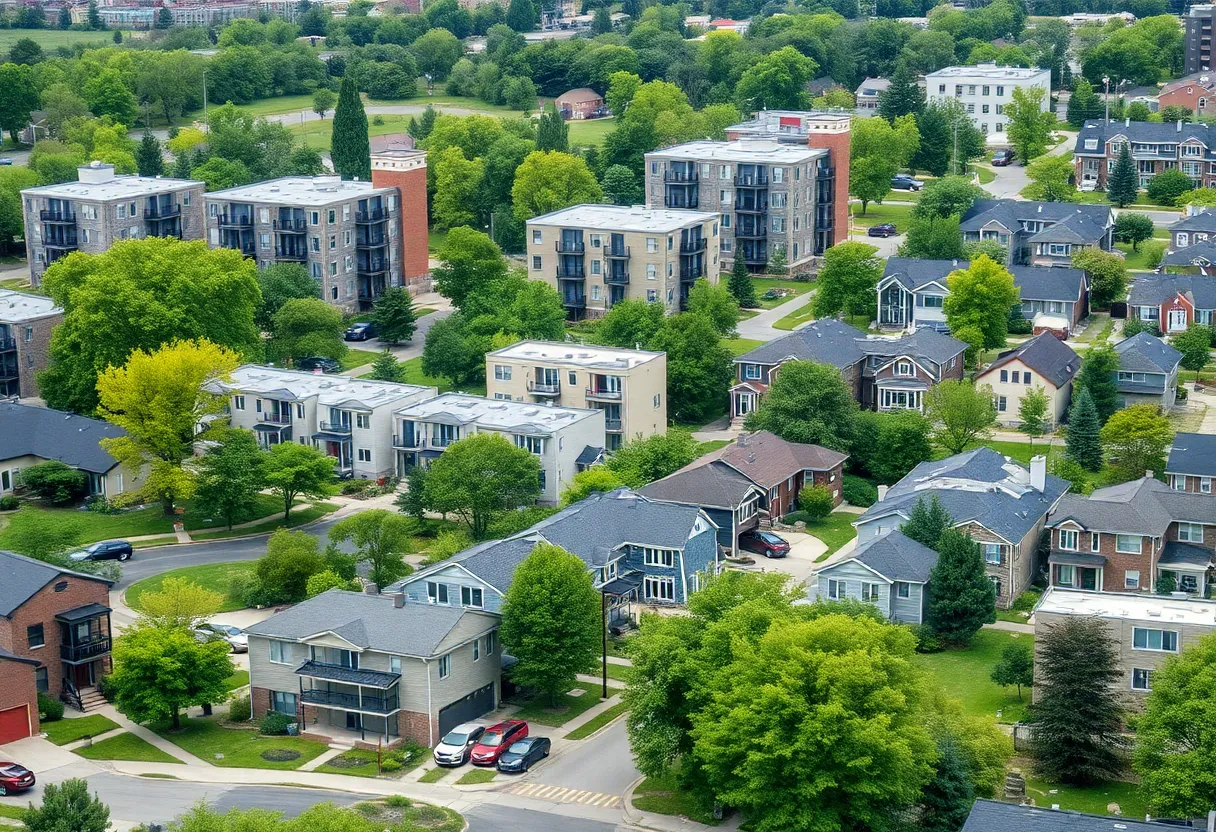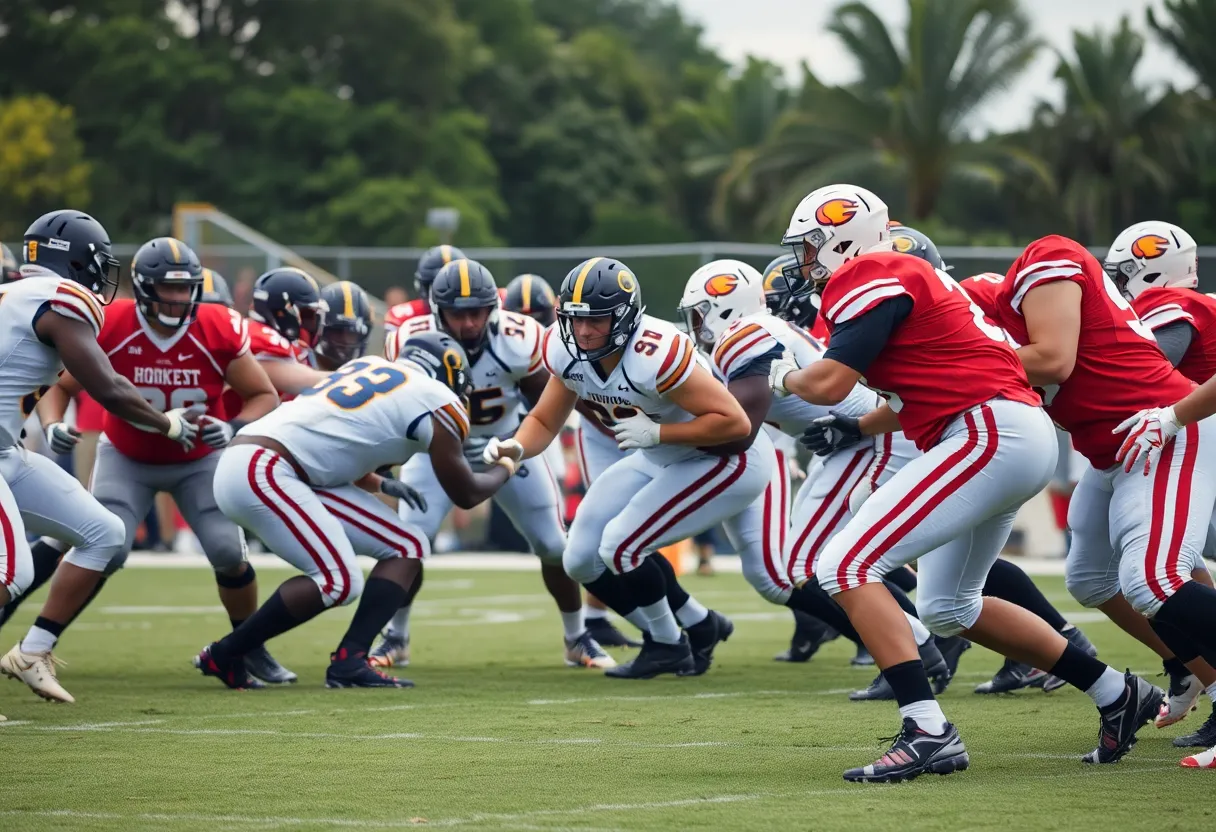News Summary
Gary, Indiana’s housing market is witnessing significant changes due to an influx of new residents seeking affordability and diverse housing options. The population growth, propelled by economic opportunities, is challenging developers to rethink housing strategies, focusing on affordability while promoting varied housing types. Local initiatives are underway to address these issues, creating a more inclusive and sustainable environment. With urban renewal efforts and improved infrastructure, Gary is poised for a transformation that could align housing development with community growth objectives.
Gary, Indiana’s Housing Market Undergoes Major Changes Amid Population Growth and Affordability Concerns
The housing landscape in Gary, Indiana, is experiencing significant transformation as the region grapples with increasing population numbers, shifting housing demands, and ongoing affordability challenges. This shift marks a departure from the area’s traditional focus on single-family suburban development to a broader mix of housing options aimed at supporting future growth and inclusiveness.
Population Growth Driven by Economic and Demographic Factors
In 2023, approximately 30,000 new residents moved to Indiana, attracted by the state’s relative affordability compared to neighboring Illinois and the lure of new employment opportunities. As part of the broader Northwest Indiana region, Gary is a key area expected to see its population grow, with projections indicating that the regional population will reach around 900,000 by 2050. This figure is comparable to cities such as Austin or San Francisco, reflecting substantial demographic shifts.
The influx has also attracted interest from both newcomers and current Indiana residents, highlighting a growing appeal from various demographic groups seeking more affordable living environments. Local developers note an increase in inquiries from individuals relocating to the area and from existing residents considering the benefits of moving within Indiana, emphasizing how the state “ripe to be picked” for new housing developments.
Housing Affordability Largely the Key Issue
While there appears to be a housing shortage, experts point out that the main obstacle is affordability rather than availability. A study released by Indiana University Northwest in 2025 revealed that the median home price in Lake County, which includes Gary, was approximately $245,000. To afford this median-priced home, a household would need a median annual income of about $83,000. However, only 32% of households in the region earn above $75,000, underscoring the affordability gap.
This gap has prompted policymakers, planners, and developers to rethink how to approach housing construction and distribution, emphasizing smaller-lot homes, infill development, and multi-unit housing to meet growing demands without further inflation of prices.
Housing Stock Composition and Development Efforts
The current housing stock in Gary and surrounding areas is predominantly composed of single-family detached homes, accounting for approximately 85%. This lack of diversity in housing types presents hurdles for accommodating different income levels and demographic needs.
Regional initiatives are concentrating on diversifying housing options through various projects. For example, the redevelopment of the former South Shore train station in Michigan City is set to include 220 market-rate apartments and commercial spaces, while other projects like Centennial Village in Munster focus on mixed-use developments on underused sites.
In Gary, urban renewal efforts spearheaded by Mayor Eddie Melton involve demolishing abandoned structures and revitalizing residential neighborhoods, especially for senior residents. Local zoning updates aim to allow diverse housing types such as duplexes and triplexes, supporting inclusive growth and density.
Transportation and Infrastructure Supporting Growth
Improved transit infrastructure is central to the region’s growth strategies. Developments such as the West Lake Corridor, which will connect Munster and Dyer to Hammond and Chicago, aim to foster land use and housing opportunities through better connectivity.
City planners are establishing transit development districts around train stations to encourage walkable, mixed-use communities. Projects like The Banc in Hammond are designed to offer modern living spaces with amenities accessible within walking distance. Likewise, Michigan City’s plans to redevelop the South Shore station aim to include 220 market-rate apartments alongside commercial spaces.
Focus on Affordable and “Missing Middle” Housing
Within the region, attention to affordability extends to innovative housing types such as micro-units and accessory dwelling units (ADUs), which provide cost-effective options for singles and young renters. Several new proposals, including a plan to develop 54 houses on a 25-acre site in Burns Harbor, aim to meet the so-called “missing middle” housing needs—homes that are affordable, versatile, and suited for middle-income households.
This Burns Harbor project includes new infrastructure costs covered by developers, indicating proactive regional leadership geared toward sustainable growth. Additionally, grants awarded by organizations like the FHLBank of Indianapolis, totaling over $34 million in 2024 to support approximately 1,600 affordable housing units, further bolster regional efforts.
Community, Investment, and Strategic Planning
Nonprofit organizations such as the Northwest Indiana Reinvestment Alliance are playing a crucial role by expanding homeownership opportunities and providing residents with financial guidance. Overall, civic infrastructure development, strategic zoning updates, and redevelopment initiatives point toward a regional commitment to creating vibrant, inclusive communities that prioritize placemaking and sustainable growth.
Despite a tight market—where sellers are securing 96% of asking prices amid low inventory—regional developers are focusing on balancing supply and demand through innovative projects and zoning reforms that enable diverse housing types and sustainable urban growth.
Looking Ahead
The ongoing transformation in Gary and Northwest Indiana at large aims to align housing development with broader placemaking efforts, ensuring communities are both attractive and resilient. With a focus on affordability, diversity, and infrastructure, the region seeks to create vibrant communities capable of encouraging long-term growth and stability.
Deeper Dive: News & Info About This Topic
HERE Resources
Workforce Crisis Hits Construction Industry
Significant Real Estate Transactions in Mount Sterling and Surrounding Areas
Additional Resources
- A Place to Call Home
- NWI Times: Gary Housing Market Changes
- Chicago Business: Northwest Indiana Housing Push
- Northwest Indiana Business: October-November 2025 Issue
- NWI Times: Local News
- Wikipedia: Housing Market
- Google Search: Gary Indiana Housing Market
- Encyclopedia Britannica: Housing
- Google Scholar: Gary Indiana Population Growth
- Google News: Gary Indiana Real Estate

Author: STAFF HERE INDIANAPOLIS WRITER
The INDIANAPOLIS STAFF WRITER represents the experienced team at HEREIndianapolis.com, your go-to source for actionable local news and information in Indianapolis, Marion County, and beyond. Specializing in "news you can use," we cover essential topics like product reviews for personal and business needs, local business directories, politics, real estate trends, neighborhood insights, and state news affecting the area—with deep expertise drawn from years of dedicated reporting and strong community input, including local press releases and business updates. We deliver top reporting on high-value events such as the Indianapolis 500, Indy Jazz Fest, and the Indiana State Fair. Our coverage extends to key organizations like the Indy Chamber and Visit Indy, plus leading businesses in motorsports and healthcare that power the local economy such as Indianapolis Motor Speedway and IU Health. As part of the broader HERE network, we provide comprehensive, credible insights into Indiana's dynamic landscape.





